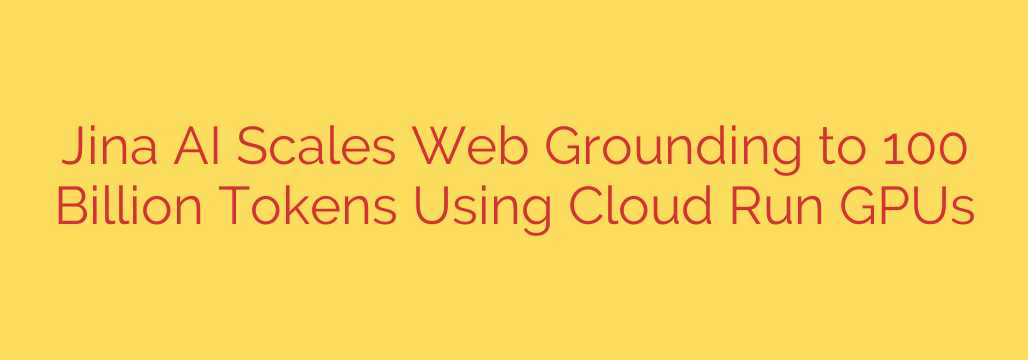
Scaling Large Language Models (LLMs) to process and integrate real-time information from the vastness of the internet presents significant challenges. While LLMs are powerful, their knowledge is typically based on static training data, meaning they can become outdated or, worse, “hallucinate” information when asked about recent events or specific current details not present in their training set.
Web grounding is a crucial technique designed to bridge this gap. It involves connecting the LLM to current web data, allowing it to retrieve relevant, up-to-date information during the inference process (when it’s generating a response). This dramatically improves the accuracy, relevance, and truthfulness of the AI’s output.
However, performing web grounding at scale – accessing, processing, and integrating information from potentially billions of web pages – is computationally intensive. It requires immense processing power and the ability to handle fluctuating demands based on queries and the dynamic nature of web content.
A significant milestone has been achieved in this area: successfully scaling web grounding capacity to process the equivalent of 100 billion tokens. This represents a massive leap forward in the ability to connect AI models with current information at an unprecedented scale.
Achieving this level of scale required leveraging powerful and flexible infrastructure. The utilization of Cloud Run GPUs proved instrumental. This technology provides on-demand access to high-performance graphical processing units, essential for the parallel processing needed to handle the complex tasks involved in crawling, indexing, and retrieving relevant web data rapidly. The scalability offered by such cloud infrastructure is key to meeting the unpredictable demands of real-time AI applications.
The implications of scaling web grounding to this level are profound for AI development. It means:
- Improved Accuracy: LLMs can rely on factual, current data retrieved directly from the web, significantly reducing the likelihood of generating incorrect or outdated information.
- Reduced Hallucinations: By grounding responses in real-world data, the tendency for models to invent facts is diminished.
- Access to Real-time Information: LLMs can provide insights into recent events, news, and fast-changing data, making them useful for applications requiring up-to-the-minute knowledge.
- Richer Context: Models can better understand and respond to queries that depend on current context or specific web-based information.
This advancement marks a critical step towards building more reliable, trustworthy, and powerful AI systems that are truly connected to the ever-evolving world of information. It opens doors for a new generation of AI applications that can deliver highly accurate, relevant, and timely insights by effectively utilizing the vast resources of the internet.
Source: https://cloud.google.com/blog/products/application-development/how-jina-ai-built-its-100-billion-token-web-grounding-system-with-cloud-run-gpus/








